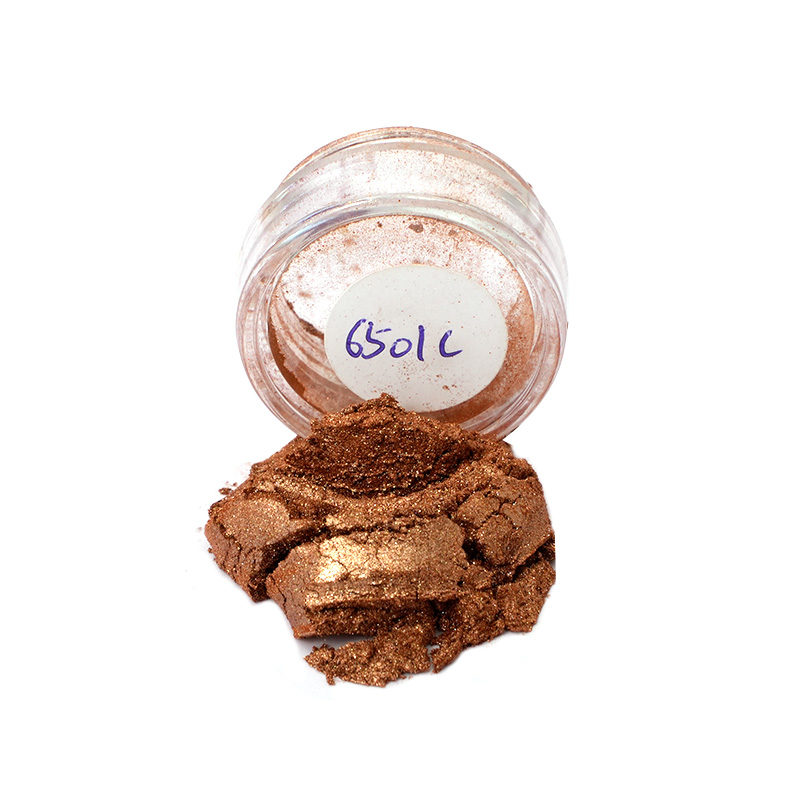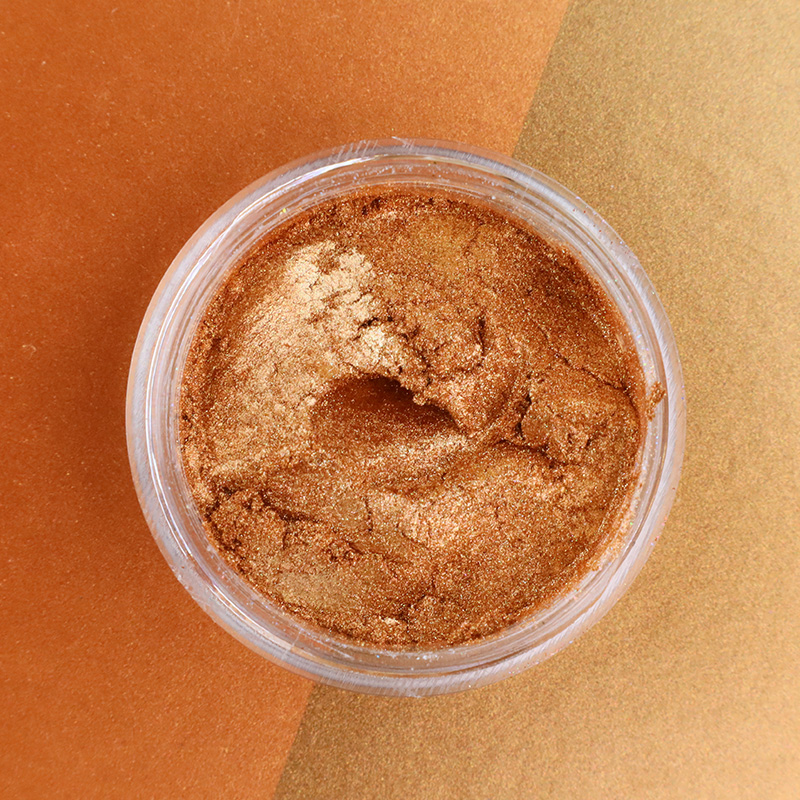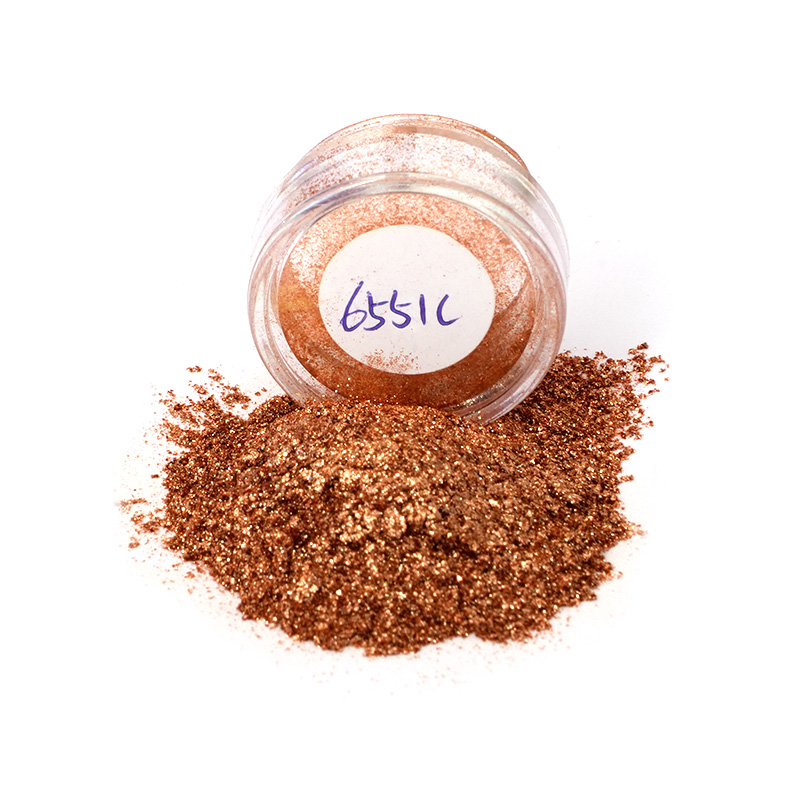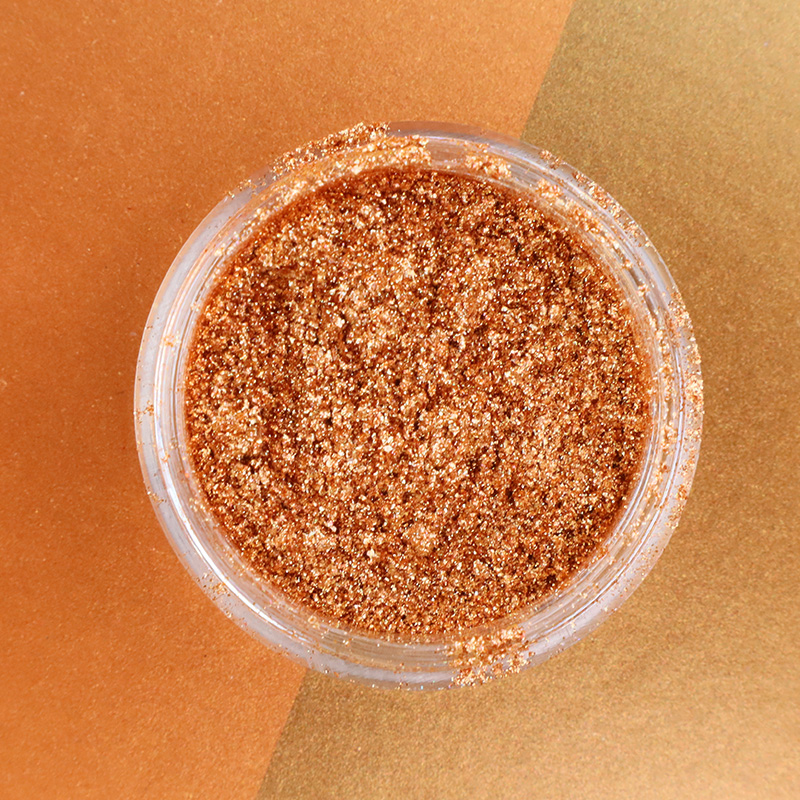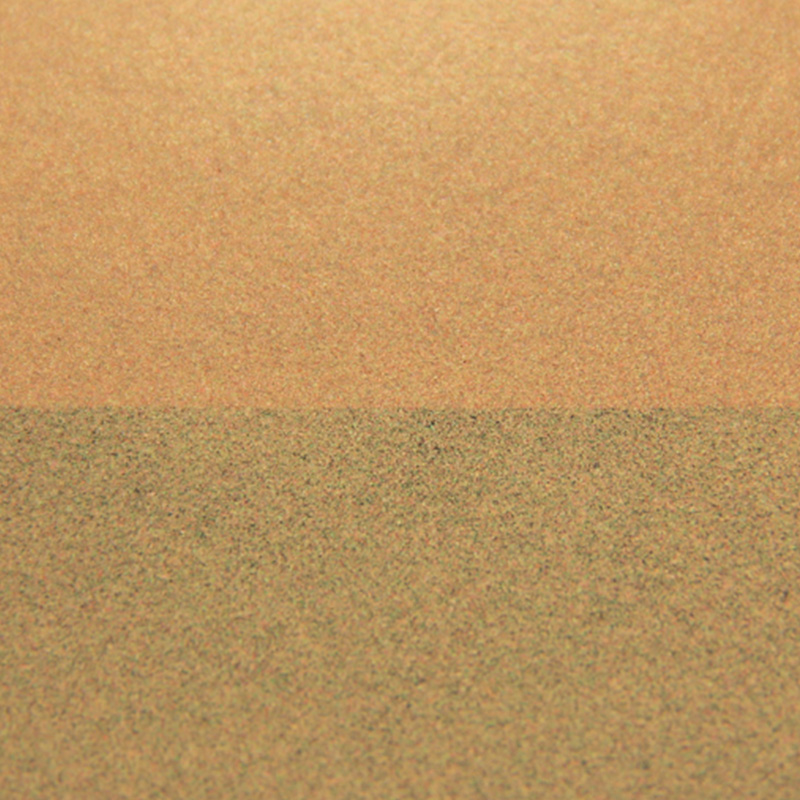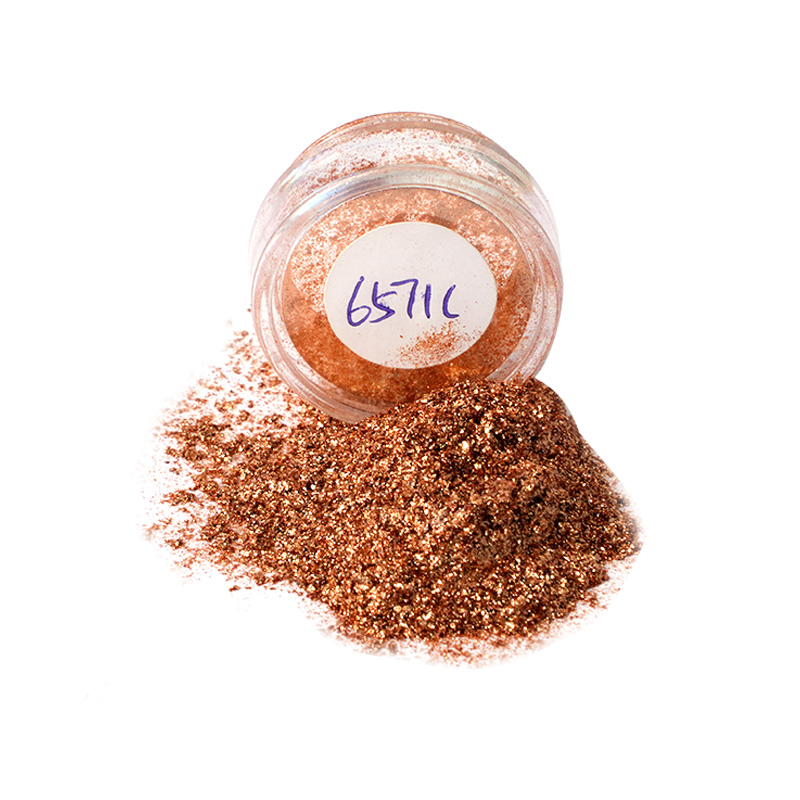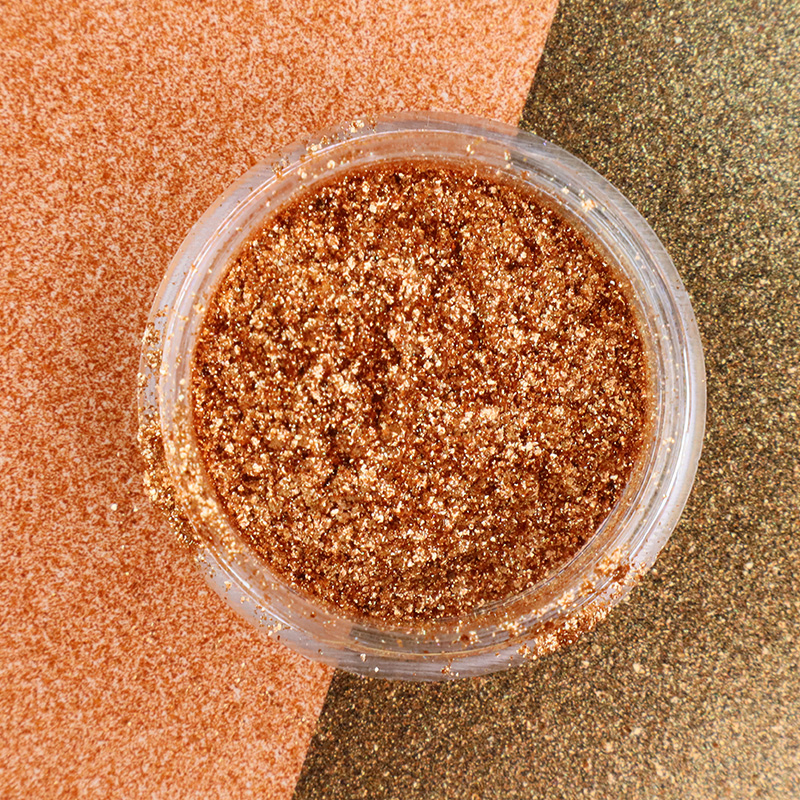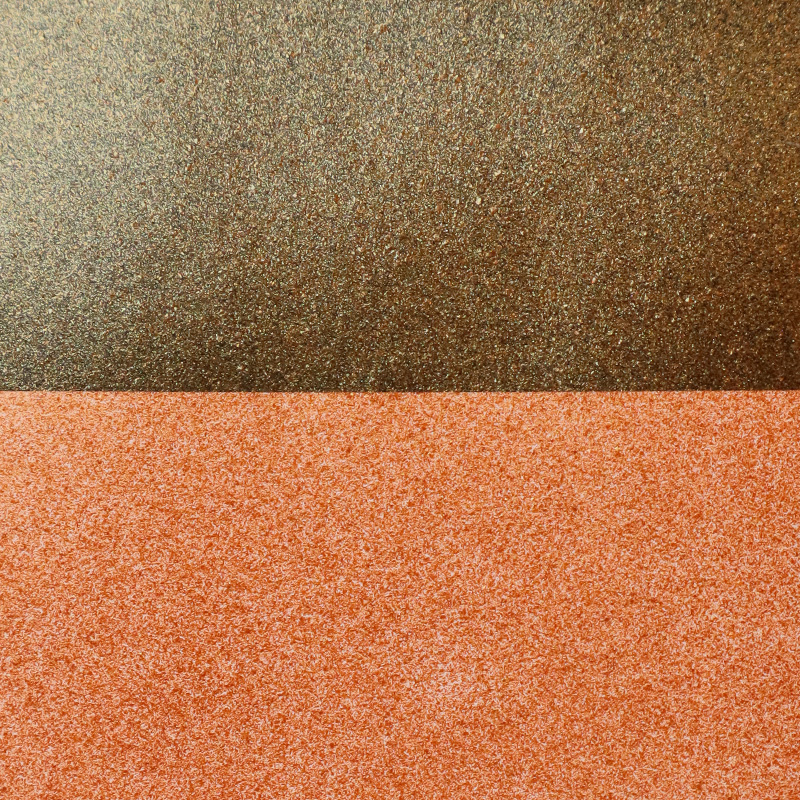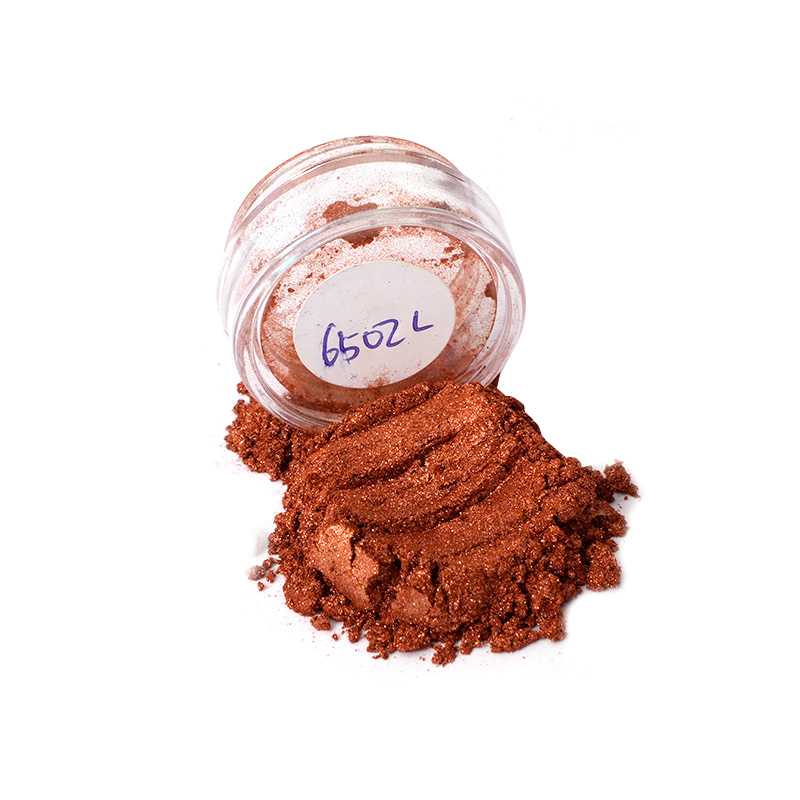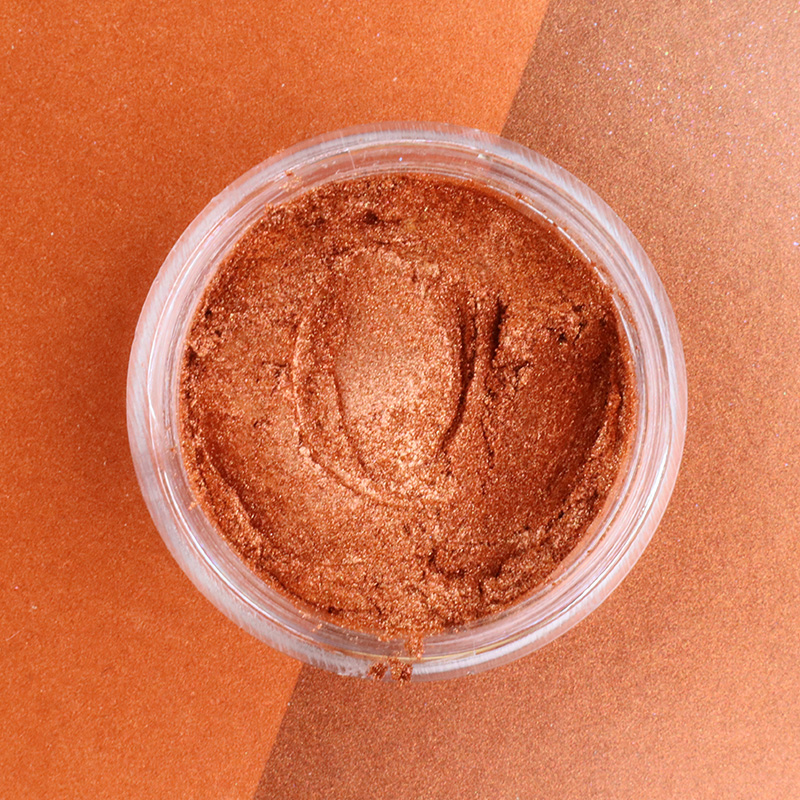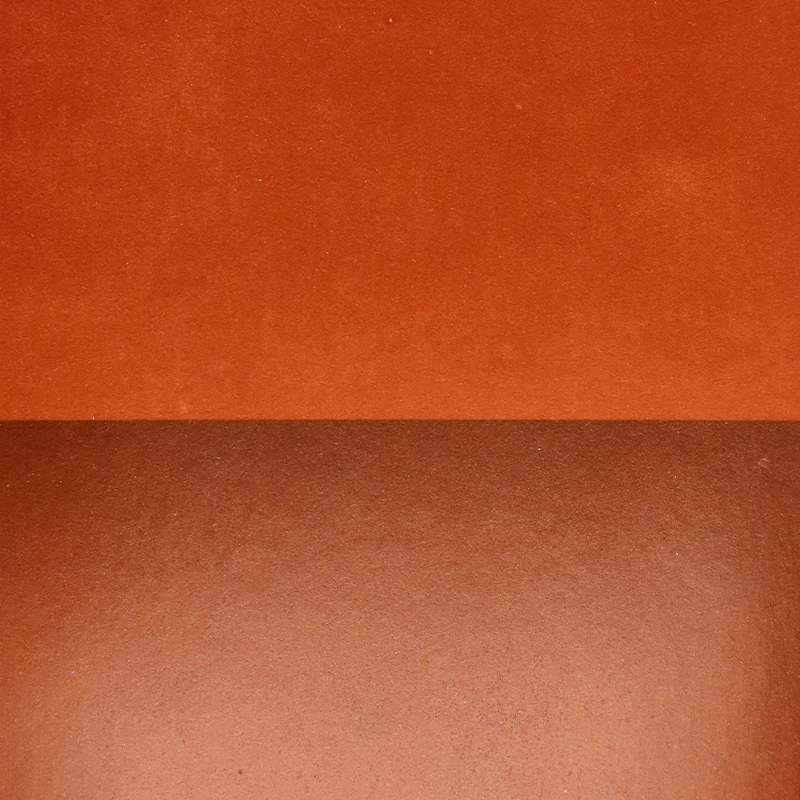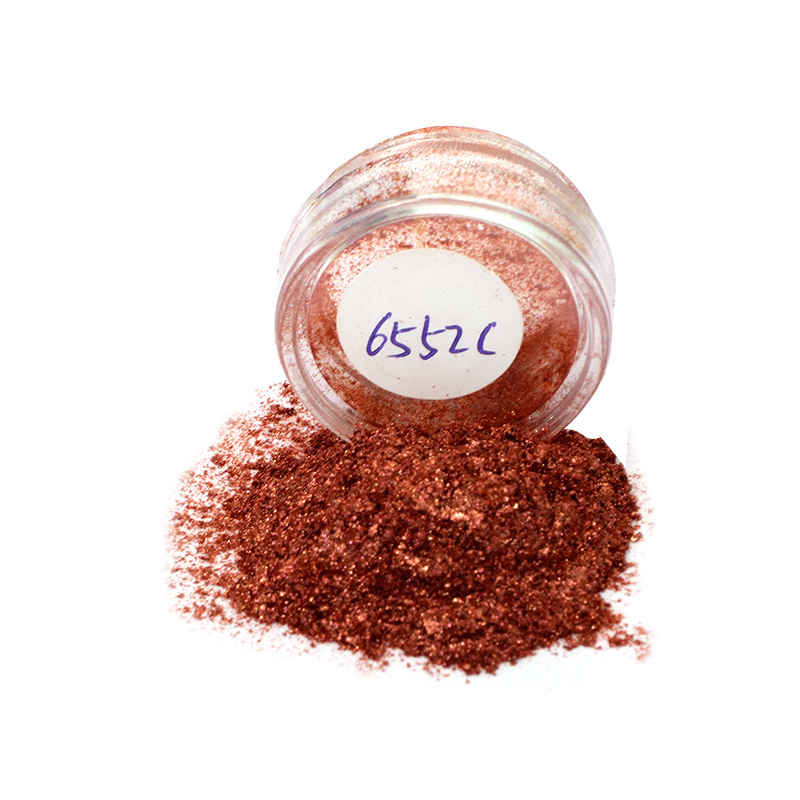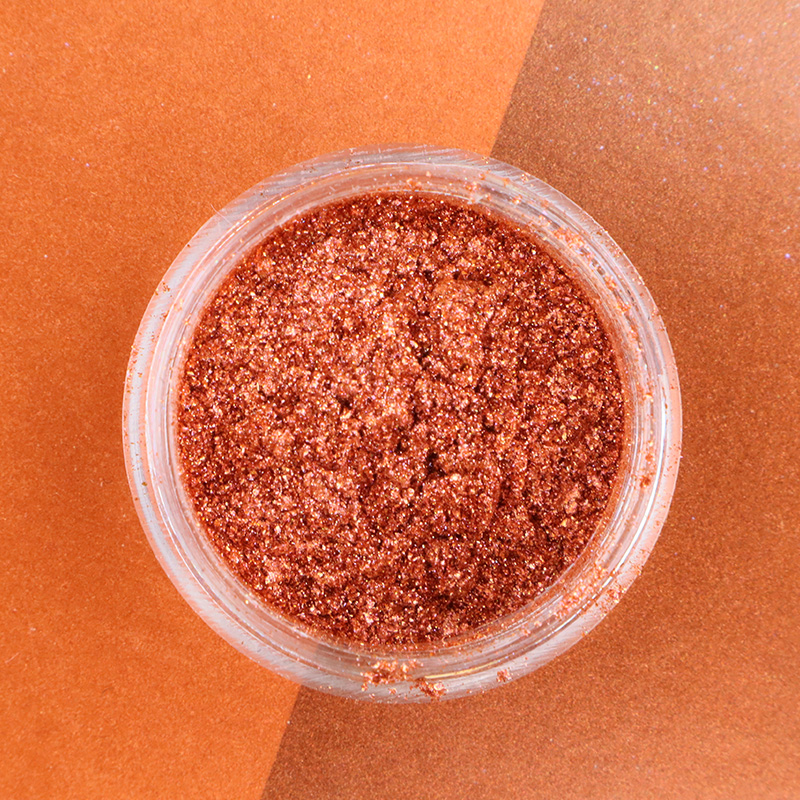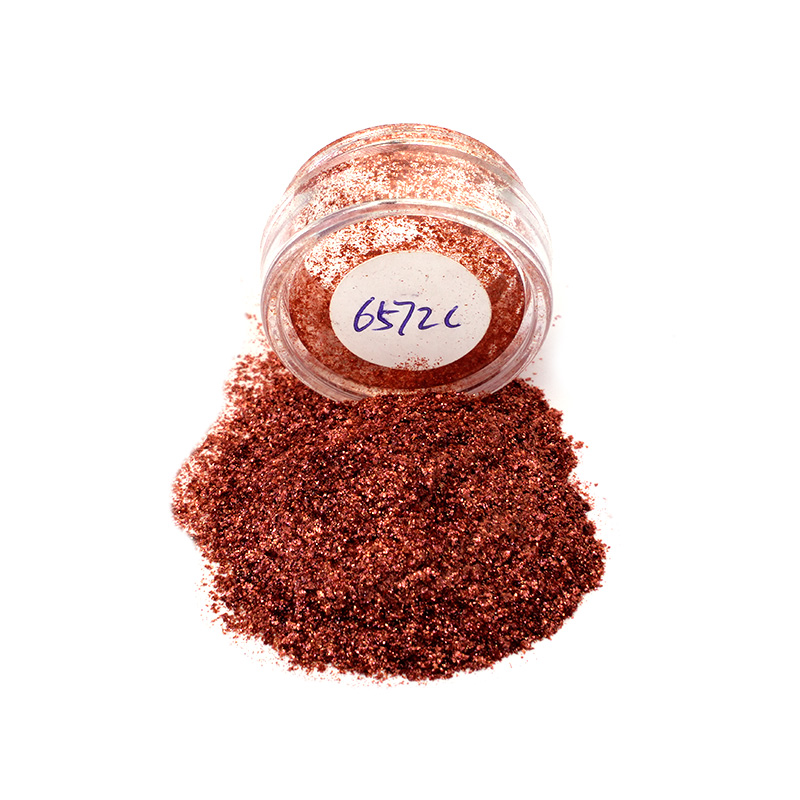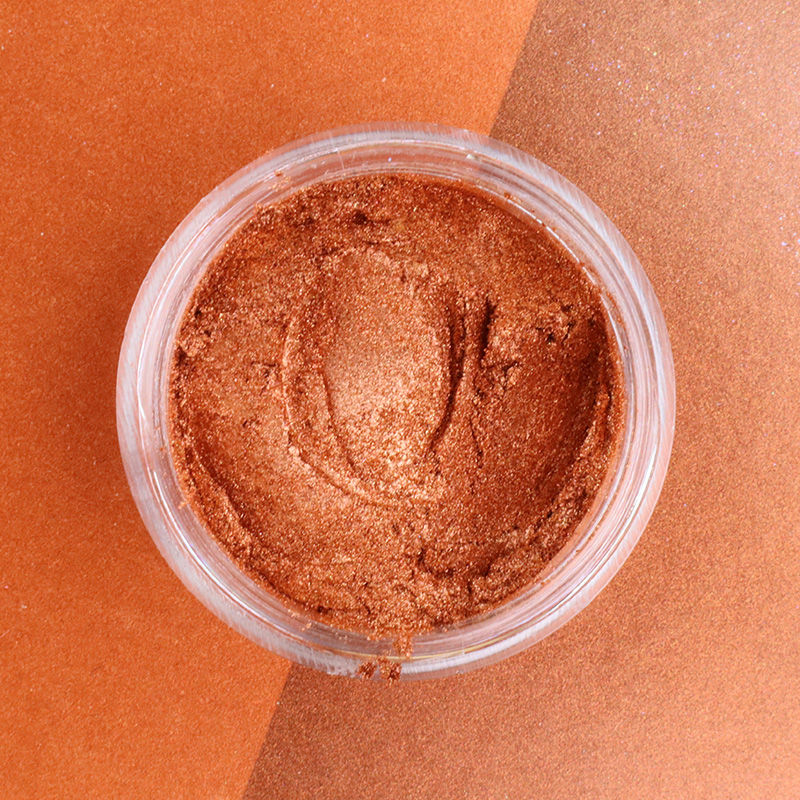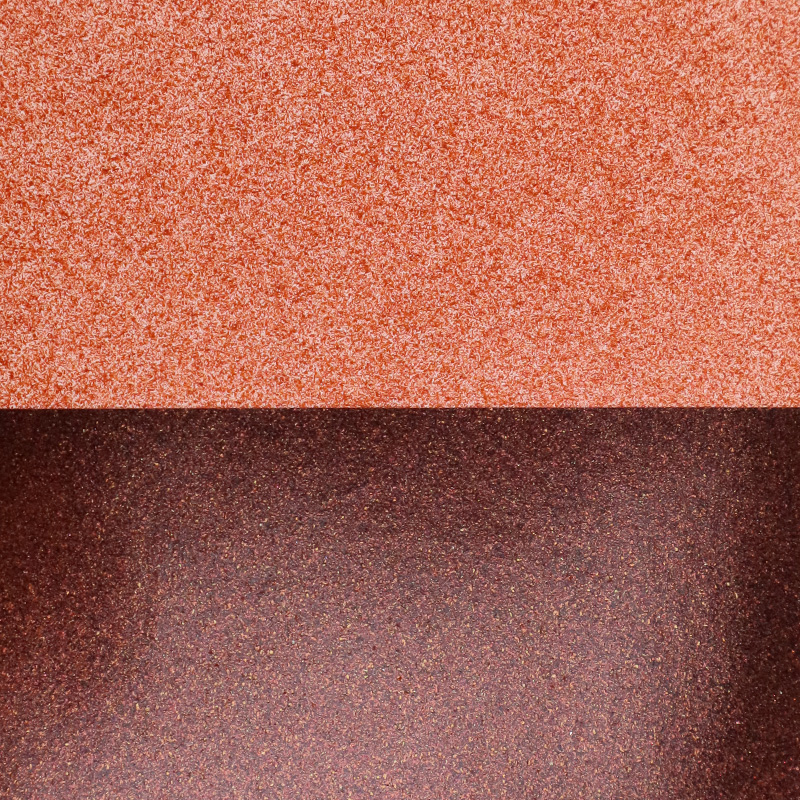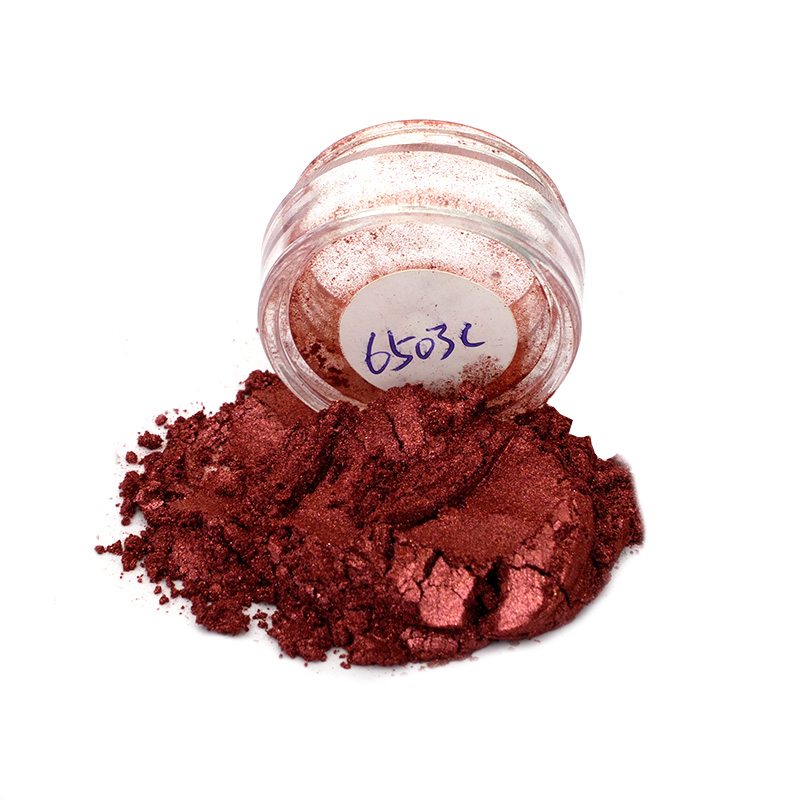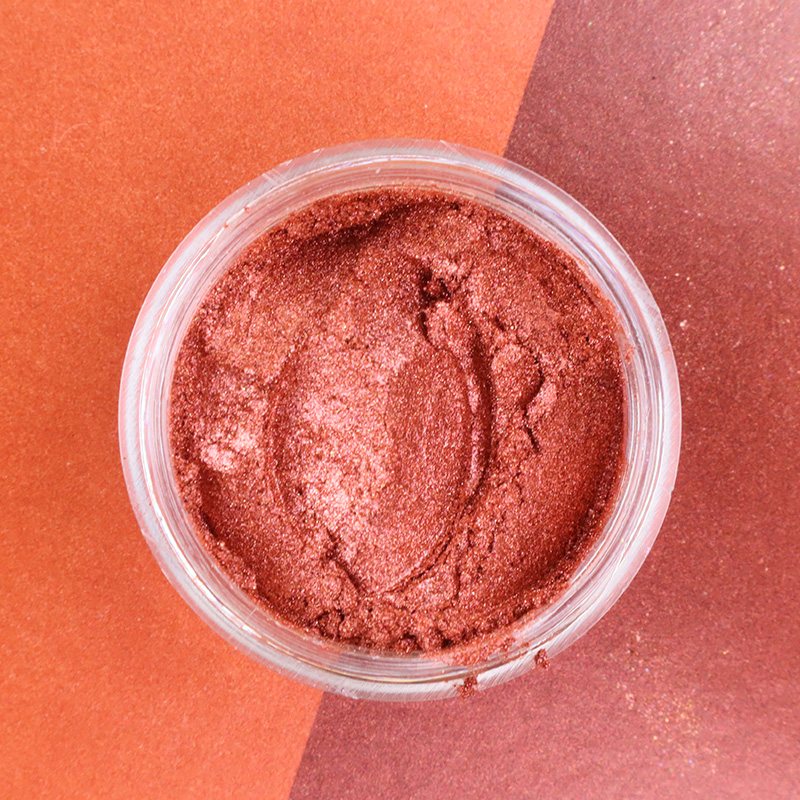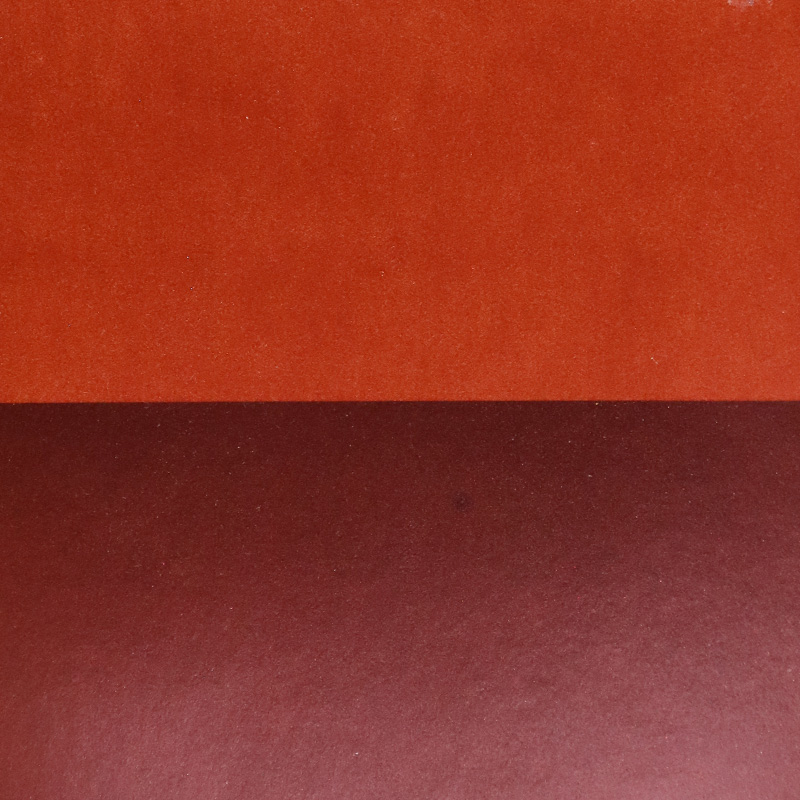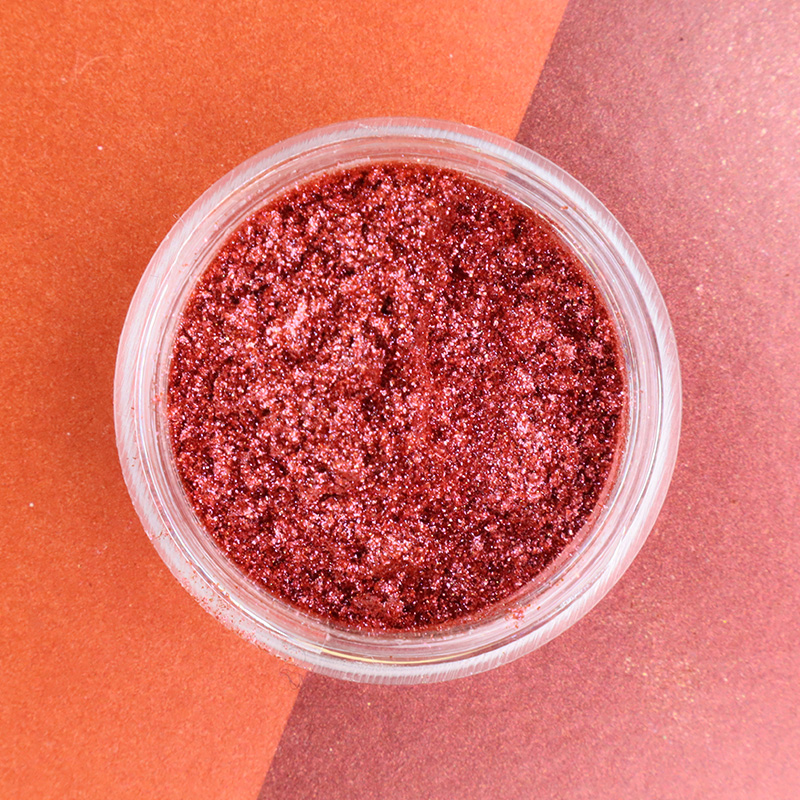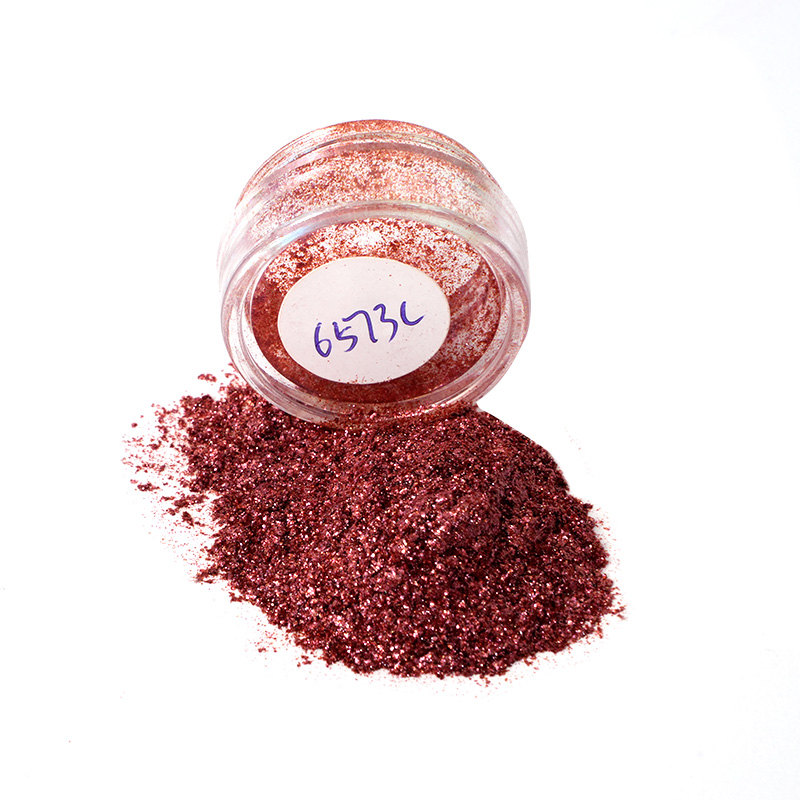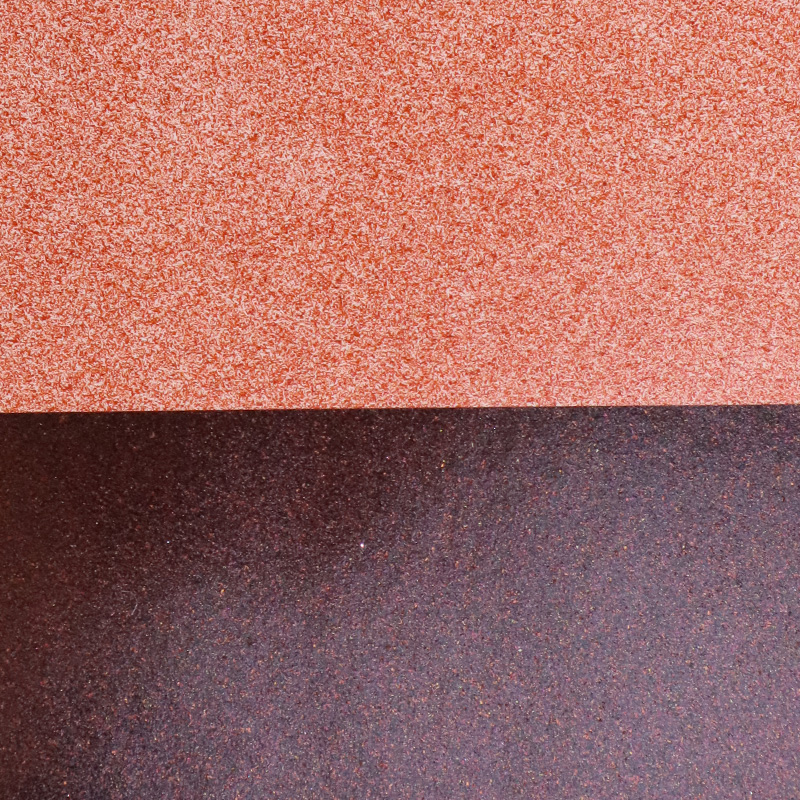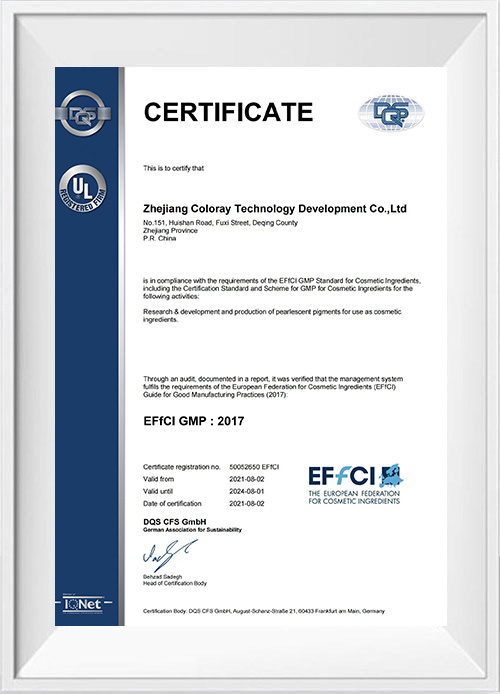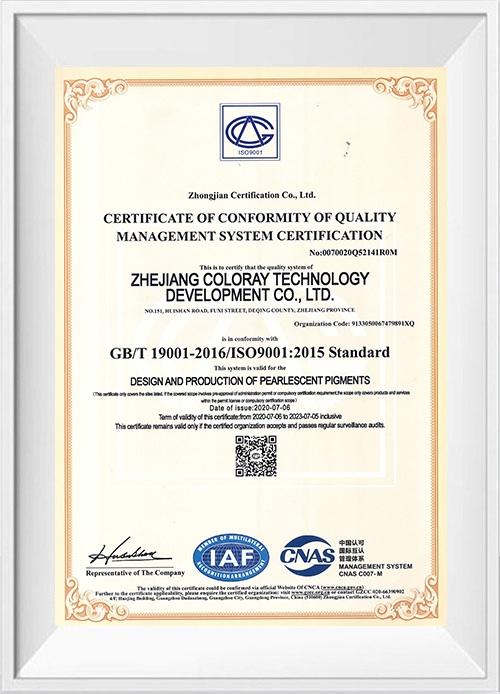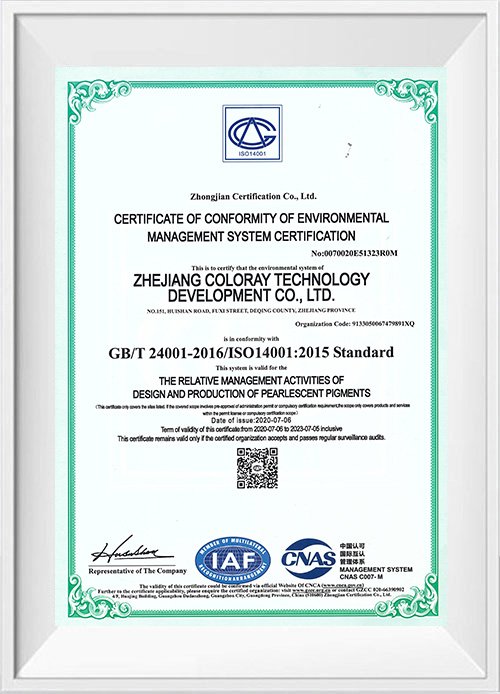What is the difference between crystal metal pearlescent pigment and crystal gold pearlescent pigment?
Although crystal metal pearlescent pigment and crystal gold pearlescent pigment have similar names, they have certain differences in composition, manufacturing process, effect and application. The following is a detailed comparison of the two pigments.
Crystal metal pearlescent pigments are usually made of mica flakes coated with metal oxides (such as titanium dioxide, iron oxide). The type and thickness of the metal oxide determine the color and luster of the pigment. It is composed of multiple layers of transparent or translucent materials with a coating of metal oxides on the surface. This structure gives it a metallic luster and glittering effect.
Crystal gold pearlescent pigments are mainly made of non-metallic materials such as mica, glass, and silica coated with titanium dioxide or other pigments. It is usually a transparent or translucent flake material with a non-metallic oxide coated on the surface. This structure gives it a soft pearlescent effect, similar to the luster of pearls.
The manufacturing process of crystal metal pearlescent pigments involves coating a substrate (such as mica flakes) with metal oxides, which is usually done by physical or chemical deposition. The uniformity and thickness of the coating directly affect the effect of the pigment.
The manufacturing process of crystal gold pearlescent pigment mainly involves coating the substrate with non-metallic oxides, which is usually carried out by chemical vapor deposition or sol-gel method. The process requirements are high to ensure uniform coating and consistent optical effects.
Crystal metal pearlescent pigments have a strong metallic luster and reflective effect, and are usually used to create high brightness and glittering effects. Due to the presence of metal oxides, these pigments can present bright and varied colors, and the luster is more metallic.
Crystal gold pearlescent pigments produce a soft pearlescent effect, similar to the luster of pearls, which is more gentle and natural. The colors are diverse and usually softer. The luster effect is not as strong as metallic pigments, but it is more suitable for applications that require a soft luster.
Crystal metal pearlescent pigments: used in automotive paints, providing high brightness and glittering effects, making the appearance of vehicles more dazzling. Used in eye shadow, nail polish, etc., to increase the luster and attractiveness of the product.
Crystal gold pearlescent pigments: widely used in foundation, eye shadow, lipstick, etc., providing a natural pearlescent effect, making the makeup softer and more natural. Used in plastic products to enhance the appearance of gloss and texture.
Crystal metal pearlescent pigments have a strong metallic luster and obvious reflective effect. It can present bright and varied colors. It is suitable for fields that require high gloss and sparkling effects.
Crystal gold pearlescent pigment produces a soft and natural pearlescent effect. The color is softer and not as dazzling as metallic pigments. It is suitable for fields such as cosmetics, plastics and coatings that require natural gloss.
Why are crystal metallic pearlescent pigments more suitable for areas that require high gloss and glittering effects?
Crystal metallic pearlescent pigments are more suitable for areas that require high gloss and glittering effects, mainly due to their unique optical properties and structural design. The following is a detailed explanation.
Crystal metallic pearlescent pigments are made of mica flakes and other substrates coated with metal oxides (such as titanium dioxide, iron oxide). These metal oxides have high reflectivity and can reflect a large amount of light, producing a strong metallic luster effect. The metal oxide coating forms a mirror reflection, which can reflect the light back with greater brightness and clarity, enhancing the visual impact.
The multi-layer structure of crystal metallic pearlescent pigments causes light to interfere between different layers, enhancing the brightness and color change of the pigment and producing a unique glittering effect. Due to the flake structure of the pigment, light can be reflected from multiple angles, increasing the glittering and color-changing effects of the pigment, making it present different visual effects under different lighting conditions.
By controlling the thickness of the metal oxide coating, the optical properties of the pigment, including color and reflection effects, can be precisely adjusted. Thicker coatings usually enhance the reflection effect and make the gloss stronger. Uniform coatings ensure that the pigment reflects light consistently in all directions, improving the overall gloss and glittering effect.
The flake structure provides a large surface area, which helps to reflect and refract light more effectively, enhancing gloss and brightness. The transparency or translucency of the substrate allows light to pass through the multi-layer structure, further enhancing the light interference effect and enhancing the glittering effect.
Using crystal metal pearlescent pigments in automotive paint can make the vehicle surface present a strong metallic luster and glittering effect, improving the visual appeal and high-end sense of the vehicle. These pigments have good weather resistance and durability, can maintain stable optical effects under different climatic conditions, and extend the service life of the coating.
Used in cosmetics such as eye shadow, nail polish, lip gloss, etc., it can provide a strong gloss and glittering effect, making the makeup more eye-catching and charming. By adjusting the type and thickness of metal oxides, a variety of colors and gloss effects can be achieved to meet the design needs of different cosmetics.
Used in high-end industrial products, such as home appliances, electronic product housings, etc., to provide a metallic high-gloss appearance and improve the market competitiveness of products. Show multi-angle glittering effects under different lighting conditions to increase the uniqueness and beauty of the product.
